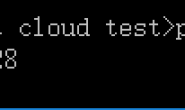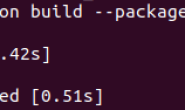目录 | 上一节 (2.7 对象模型) | 下一节 (3.2 深入函数)
3.1 脚本
在该部分,我们将深入研究编写 Python 脚本的惯例。
什么是脚本?
脚本就是运行和终止一系列语句的程序。
# program.py
statement1
statement2
statement3
...
到目前为止,我们主要在编写脚本。
问题
如果你编写一个有用的脚本,它的特性和功能将会增加。你可能想要将其应用于相关的问题。随着时间的推移,它可能会成为一个关键的应用程序。如果你不注意的话,它可能会变成一团乱麻。因此,让我们有条理的组织程序吧。
定义变量
名称必须在使用之前定义。
def square(x):
return x*x
a = 42
b = a + 2 # Requires that `a` is defined
z = square(b) # Requires `square` and `b` to be defined
顺序很重要。
几乎总是把变量和函数的定义放到顶部附近。
定义函数
把所有与单个任务相关的代码都放到一个地方是个好主意。可以使用函数实现:
def read_prices(filename):
prices = {}
with open(filename) as f:
f_csv = csv.reader(f)
for row in f_csv:
prices[row[0]] = float(row[1])
return prices
函数也可以简化重复的操作。
oldprices = read_prices('oldprices.csv')
newprices = read_prices('newprices.csv')
什么是函数?
函数是命名的语句序列。
def funcname(args):
statement
statement
...
return result
任何 Python 语句都可以在函数内部使用。
def foo():
import math
print(math.sqrt(2))
help(math)
Python 中没有特殊语句(这使它很容易记住)。
函数定义
可以按任何顺序定义函数。
def foo(x):
bar(x)
def bar(x):
statements
# OR
def bar(x):
statements
def foo(x):
bar(x)
在程序执行期间,函数必须在实际使用之前(调用)定义。
foo(3) # foo must be defined already
在文体上,函数以自底向上的方式定义可能更常见。
自底向上的风格
函数被当做构建块。较小/较简单的块优先。
# myprogram.py
def foo(x):
...
def bar(x):
...
foo(x) # Defined above
...
def spam(x):
...
bar(x) # Defined above
...
spam(42) # Code that uses the functions appears at the end
后面的函数基于前面的函数构建。再次说明,这仅仅是一种风格问题。在上面程序中唯一重要的事情是 spam(42) 的调用是在最后一步。
函数设计
理想情况下,函数应该是一个黑盒。它们应该仅对输入进行操作,并避免全局变量和奇怪的副作用。首要目标:模块化和可预测性。
文档字符串
以文档字符串(doc-string)的形式包含文档是良好的实践。文档字符串是紧接着函数名的字符串。它们用于 help() 函数,集成开发环境和其它的工具。
def read_prices(filename):
'''
Read prices from a CSV file of name,price data
'''
prices = {}
with open(filename) as f:
f_csv = csv.reader(f)
for row in f_csv:
prices[row[0]] = float(row[1])
return prices
一个好的文档字符串实践是写一句简短的话总结该函数做什么。如果需要更多的信息,请包含一个简短的带有更详细的参数说明的使用示例,
类型注解
也可以添加可选的类型提示到函数定义中。
def read_prices(filename: str) -> dict:
'''
Read prices from a CSV file of name,price data
'''
prices = {}
with open(filename) as f:
f_csv = csv.reader(f)
for row in f_csv:
prices[row[0]] = float(row[1])
return prices
提示在操作上什么也不做。它们纯粹是信息性的。但是,集成开发工具,代码检查器,以及其它工具可能会使用它来执行更多的操作。
练习
在第 2 节中,编写了一个名为 report.py 的程序,该程序可以打印出显示股票投资组合绩效的报告。此程序包含一些函数。例如:
# report.py
import csv
def read_portfolio(filename):
'''
Read a stock portfolio file into a list of dictionaries with keys
name, shares, and price.
'''
portfolio = []
with open(filename) as f:
rows = csv.reader(f)
headers = next(rows)
for row in rows:
record = dict(zip(headers, row))
stock = {
'name' : record['name'],
'shares' : int(record['shares']),
'price' : float(record['price'])
}
portfolio.append(stock)
return portfolio
...
但是,程序的有些部分仅执行一系列的脚本计算。这些代码出现在程序结尾处。例如:
...
# Output the report
headers = ('Name', 'Shares', 'Price', 'Change')
print('%10s %10s %10s %10s' % headers)
print(('-' * 10 + ' ') * len(headers))
for row in report:
print('%10s %10d %10.2f %10.2f' % row)
...
在本练习中,我们使用函数来对该程序进行有条理的组织,使程序更健壮。
练习 3.1:将程序构造为函数的集合
请修改 report.py 程序,以便所有主要操作(包括计算和输出)都由一组函数执行。特别地:
- 创建打印报告的函数
print_report(report)。 - 修改程序的最后一部分,使其仅是一系列函数调用,而无需进行其它运算。
练习 3.2:为程序执行创建一个顶层函数
把程序的最后一部分打包到单个函数 portfolio_report(portfolio_filename, prices_filename) 中。让程序运行,以便下面的函数调用像之前一样创建报告。
portfolio_report('Data/portfolio.csv', 'Data/prices.csv')
在最终版本中,程序只不过是一系列函数定义,最后是对单个函数portfolio_report() 的调用(它执行程序中涉及的所有步骤)。
通过将程序转换为单个函数,在不同的输入后可以很轻松地运行它。例如,在运行程序后以交互方式尝试这些语句:
>>> portfolio_report('Data/portfolio2.csv', 'Data/prices.csv')
... look at the output ...
>>> files = ['Data/portfolio.csv', 'Data/portfolio2.csv']
>>> for name in files:
print(f'{name:-^43s}')
portfolio_report(name, 'Data/prices.csv')
print()
... look at the output ...
>>>
说明
Python 使在有一系列语句的文件中编写相对无结构的脚本变得很轻松。总体来说,无论何时,尽可能地利用函数通常总是更好的选择。在某些时候,脚本会不断增加,并且我们希望它更有组织。另外,一个鲜为人知的事实是,如果使用函数,Python 的运行会更快一些。
目录 | 上一节 (2.7 对象模型) | 下一节 (3.2 深入函数)
注:完整翻译见 https://github.com/codists/practical-python-zh




